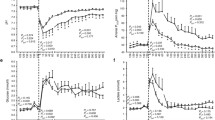Abstract
Seventy-five premature infants weighing between 600 and 3200 g were studied over a period of 1 year. All of the infants received surfactant therapy for hyaline membrane disease immediately after birth and, thereafter, up to four doses every 6 h. The roentgenographic findings in all patients were documented at birth and at 2 days, 7–10 days, and 21–28 days of life. Larger babies responded to surfactant therapy better than did smaller infants. The smaller infants, even after initial clearing, were prone to develop pulmonary edema and the bubbly lungs of bronchopulmonary dysplasia. These data suggest that small infants, while initially responding to surfactant therapy with clearing of their lungs, are still at considerable risk of developing chronic lung disease in the form of pulmonary edema and bronchopulmonary dysplasia. An explanation is offered for why this occurs; at the same time it is suggested that, in view of our findings and those in the literature, the problems of pulmonary edema and bubbly lungs be more clearly separated.
Similar content being viewed by others
References
Berry DD, Pramanik AK, Philips JB III, Buchter DS, Kanarek KS, Easa D, Kopelman AE, Edwards K, Long W, American Exosurf Neonatal Study Group II (1994) Comparison of the effect of three doses of synthetic surfactant on the alveolar-arterial oxygen gradient in infants weighing more than 1250 grams with respiratory distress syndrome. J Pediatr 124: 294–301
Bick U, Muller-Lessie C, Troger J, Jorch G, Roos N, Meyer zu Wendischoff J, Flothmann U, Kachel W, Lemburg P, Linderkamp O, Horchen H, Porksen C, Schoder H, Staudt F, Sychlowy A, Weise G, Galaska R (1992) Therapeutic use of surfactant in neonatal respiratory distress syndrome. Pediatr Radiol 22: 169–173
Long W (1991) Decreased mortality rate among small premature infants treated at birth with a single dose of synthetic surfactant: a multicenter con trolled trial. J Pediatr 118: 277–284
Horbar JD, Wright EC, Onstad L, Onstad L (1993) Decreasing mortality associated with the introduction of surfactant therapy: an observational study of neonates weighing 601—1300 grams at birth. Pediatrics 92: 191–196
Edwards DK, Hilton SVW, Merrit TA, Hallman M, Mannino F, Boynton BR (1985) Respiratory distress syndrome treated with human surfactant: radiographic findings. Radiology 157: 329–334
Wood BP, Sinkin RA, Kendig JW, Notter RH, Shapiro DL (1987) Exogenous lung surfactant: effect on radiographic appearance in premature infants. Radiology 165: 11–13
Emery JL, Mithal A (1960) The number of alveoli in the terminal respiratory unit of man during late intrauterine life and childhood. Arch Dis Child 35: 544
Mithal A, Emery JL (1961) Postnatal development of alveoli in premature infants. Arch Dis Child 36: 449–450
Brasch RC, Berthezene Y, Vexler V, Rosenau W, Clement O, Muhler A, Kuwatsuru R, Shames DM (1993) Pulmonary oxygen toxicity: demonstration of abnormal capillary permeability using contrast-enhanced MRI. Pediatr Radiol 23:495–500
Groneck P, Gotze-Speer B, Opperman M, Eiffert H, Speer CP (1994) Association of pulmonary inflammation and increased microvascular permeability during the development of bronchopulmonary dysplasia: a sequential analysis of inflammatory mediators in respiratory fluids of high-risk preterm neonates. Pediatrics 93: 712–718
Northway WH Jr, Rosan RC, Porter DY (1967) Pulmonary disease following respiratory therapy of hyaline membrane disease; bronchopulmonary dysplasia. N Engl J Med 276: 358–368
Fitzgerald P, Donohue V, Gorman W (1990) Bronchopulmonary dysplasia: a radiographic and clinical review of 20 patients. Br J Radiol 63: 444–447
Ballard RA, Kraybill EN, Hernandez J, Renfield ML, Blankenship WJ (1973) Idiopathic respiratory distress syndrome. Treatment with continuous negative-pressure ventilation. Am J Dis Child 125: 676–681
Fanaroff AA, Cha CC, Sosa R, Crumrine RS, Klaus MH (1973) Controlled trial of continuous negative external pressure in the treatment of severe respiratory distress syndrome. J Pediatr 82: 921–926
Kao LC, Durand DJ, McCrea RC, Birch M, Powers RJ, Nicherson BG (1994) Randomized trial of long-term diuretic therapy for infants with oxygen-dependent bronchopulmonary dysplasia. J Pediatr 124: 772–781
Clark RJ, Gerstmann DR, Null DM Jr, deLemos RA (1992) Prospective randomized comparison of high-frequency oscillatory and conventional ventilation in respiratory distress syndrome. Pediatrics 89: 5–12
HiFO Study Group (1993) Randomized study of high-frequency oscillatory ventilation in infants with severe respiratory distress syndrome. J Pediatr 122: 609–619
Van Lierde S, Cornelis A, Devlieger H, Moerman P, Lauweryns J, Eggermont E (1991) Different patterns of pulmonary sequelae after hyaline membrane dis ease: heterogeneity of bronchopulmonary dysplasia? Biol Neonate 60: 152–162
Author information
Authors and Affiliations
Rights and permissions
About this article
Cite this article
Swischuk, L.E., Shetty, B.P. & John, S.D. The lungs in immature infants: How important is surfactant therapy in preventing chronic lung problems?. Pediatr Radiol 26, 508–511 (1996). https://doi.org/10.1007/BF01372230
Received:
Accepted:
Issue Date:
DOI: https://doi.org/10.1007/BF01372230




